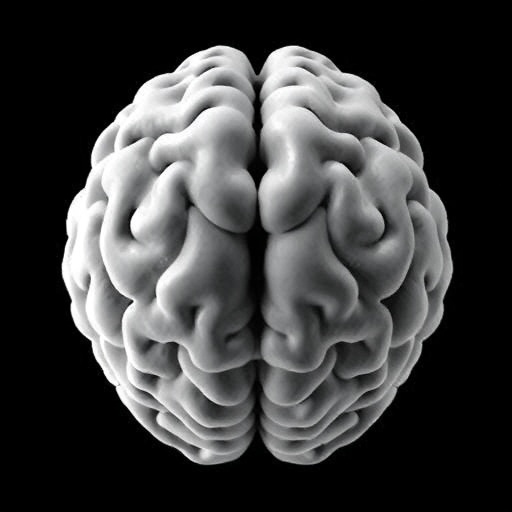In an ambitious leap forward in neuropsychiatric research, a compelling new study has unveiled extensive disruptions in the brain’s white matter integrity among individuals diagnosed with obsessive-compulsive disorder (OCD). This breakthrough, derived from pioneering tractography technology, paints a complex picture of how OCD affects not just isolated brain regions but widespread neural networks, challenging existing paradigms about the disorder’s neurobiological roots.
The study in question harnessed an innovative tractography tool, enabling researchers to reconstruct and analyze 42 of the brain’s major white matter pathways with unprecedented precision. White matter, composed of myelinated nerve fibers, is critical for efficient communication between brain regions. Any disturbance in these pathways can drastically alter cognitive and emotional processing, which is central to understanding psychiatric conditions like OCD.
By focusing on medication-free OCD patients, the research eliminated potential confounding effects from psychiatric treatments, offering a pure glimpse into the disorder’s neural architecture. This approach is crucial because medications can induce neuroplastic changes that may obscure the original pathological neural signatures associated with OCD. The newfound clarity allowed for the identification of widespread decreases in fractional anisotropy (FA)—a key metric indicating white matter integrity—in numerous brain regions.
Among the pathways exhibiting reduced FA were the uncinate fasciculus and the frontal aslant tract. The uncinate fasciculus is known for linking frontal areas involved in decision-making with limbic areas crucial for emotion regulation. Alterations here signal disruptions in the circuits that mediate the distressing intrusive thoughts and compulsive behaviors hallmarking OCD. Similarly, the frontal aslant tract, which connects prefrontal cortex regions implicated in executive control and motor planning, showed vulnerabilities that may underlie the characteristic repetitive behaviors and cognitive rigidity observed in patients.
The study’s revelations extend beyond these frontal-limbic systems to encompass the inferior and middle longitudinal fasciculi—tracts traditionally associated with integrating sensory information from visual and auditory modalities. The involvement of these pathways is particularly striking, suggesting that OCD’s neurobiological footprint includes sensory processing disruptions that were previously underappreciated. Such findings open new avenues for exploring the sensory dimensions of OCD symptomatology that may contribute to patients’ heightened anxiety or compulsive rituals triggered by environmental stimuli.
Moreover, abnormalities were detected in the rostrum of the corpus callosum, the portion responsible for interhemispheric communication between the frontal lobes. This disturbance hints at impaired coordination across the brain’s hemispheres, potentially influencing the unified experience of thought and behavior critical in OCD. The acoustic radiation and optic radiation tracts, conduits for auditory and visual information respectively, also showed decreased integrity. This convergence of connectivity disruptions across cognitive, sensory, and emotional domains gives rise to a more holistic understanding of the neurobiological underpinnings of OCD.
Corroborating these white matter changes, the study also identified multiple gray matter anomalies linked to the white matter alterations. The interplay between the brain’s gray matter regions—home to neuronal cell bodies—and white matter pathways underscores the complexity of brain dysfunction in OCD. This dual-layer insight highlights that shifts in connectivity are not isolated to the connecting highways but also arise from distortions in the regions that send and receive neural signals.
From a technical standpoint, the application of advanced diffusion MRI and cutting-edge tractography algorithms enabled the precise mapping of these pathways. Fractional anisotropy, which measures the directional coherence of water diffusion in tissue, served as a robust proxy for assessing microstructural integrity. The lowered FA values spotlighted microstructural degradation or reduced myelination, signifying that white matter alterations in OCD are widespread and systematic rather than localized aberrations.
These findings resonate with and expand existing frameworks emphasizing the role of fronto-limbic circuits in OCD pathophysiology but crucially extend the implicated networks to include sensory pathways. This broader perspective advocates for a shift in both research and treatment, urging neuroscientists and clinicians to factor in sensory processing and interhemispheric integration when conceptualizing OCD.
Furthermore, the study’s inclusion of medication-free subjects furnishes a purer biomarker profile, suggesting that these white matter disruptions are fundamental to the disorder rather than secondary consequences of pharmacotherapy. This realization bears profound implications for the development of novel therapeutic interventions that target structural connectivity, possibly through neuromodulation or cognitive training strategies designed to enhance white matter integrity.
In summation, this research offers a transformative view of obsessive-compulsive disorder’s neural basis, spotlighting the extensive and multifaceted white matter connectivity disruptions prevailing in affected individuals. It suggests that OCD is not confined to specific nodes in the brain’s frontal-limbic circuit but is emblematic of a complex network disorder involving sensory and interhemispheric communication pathways. Such insights elevate our understanding of the disorder and pave the way for more nuanced diagnostic and therapeutic approaches.
As this research gains traction, it is poised to inspire a re-examination of OCD through the lens of brain network science, emphasizing how intricate interplay between diverse neural pathways shapes the disorder’s clinical manifestations. The implications are far-reaching, from refining neuroimaging biomarkers to enriching cognitive-behavioral therapies with sensory integration components.
The neuropsychiatry community will undoubtedly watch with interest as these findings prompt further investigations into white matter microstructure, investigate causality, and explore how these neural characteristics evolve with disease progression or therapeutic intervention. This study signifies a pivotal moment, heralding a new era where the white matter landscape of OCD is mapped with unparalleled clarity and depth.
Ultimately, by illuminating the widespread alterations across key brain pathways, this research empowers scientists and clinicians alike to approach OCD with renewed insight. It challenges us to view the disorder not merely as a set of isolated symptoms but as a manifestation of intricate and disrupted brain networks, fostering innovative strategies to alleviate the burden of this debilitating condition.
Subject of Research: Obsessive-compulsive disorder (OCD) and its neural white matter integrity alterations
Article Title: Widespread alterations of white matter integrity in medication-free obsessive-compulsive disorder
Article References:
Chai, S., Jiang, J., Li, H. et al. Widespread alterations of white matter integrity in medication-free obsessive-compulsive disorder. Transl Psychiatry 15, 462 (2025). https://doi.org/10.1038/s41398-025-03689-6




